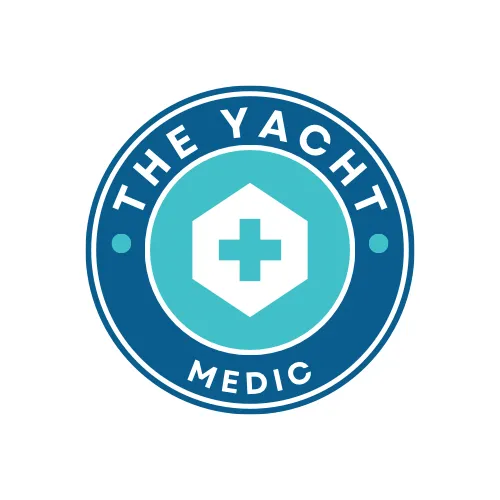See Our Latest Blogs
Beyond Boundaries, Beyond Rescue
Mastering Self Reliance At Sea

Long Haul Flights & Eye Sight
Blue Light: The Silent Killer of Your Vision and Nervous System
After years of flying and teaching wilderness medicine around the world, I noticed something odd: every time I stepped off a long-haul flight, my vision would blur, my head would throb, and I’d feel completely frazzled. It wasn’t just the dry cabin air or lack of sleep—it was something deeper.
Turns out, the culprit was blue light, the invisible stressor we’re exposed to almost everywhere, especially on flights. Once I started wearing blue blocker glasses, my symptoms improved dramatically. So let’s dive into what blue light is, why it’s harming us, and how you can protect yourself.
What Is Blue Light, and Why Should You Care?
Blue light is a type of high-energy visible (HEV) light. It has the shortest wavelengths in the visible spectrum, meaning it packs a punch. Natural blue light from the sun is helpful during the day, boosting alertness and mood. However, the artificial blue light emitted from screens, LEDs, and even airplane lighting can cause major disruptions to your health.
The problem? Our modern lives are saturated with blue light. Whether it’s scrolling on your phone, staring at a laptop, or watching a movie on a long-haul flight, your eyes are being bombarded with this intense light—often for hours at a time.
Why Flying Makes It Worse
If you’ve ever felt like your eyesight takes a hit after a long flight, there’s a good reason. Airplane cabins are designed with artificial LED lighting, which emits a significant amount of blue light. Pair that with hours of screen time on in-flight entertainment and the dehydrating effects of cabin air, and your eyes are left struggling to keep up.
But it’s not just your eyes that suffer—your nervous system is also under siege.
How Blue Light Affects Your Health
Vision Problems and Retinal Damage
Blue light penetrates deep into your retina. Over time, this can lead to digital eye strain (blurry vision, headaches, and dry eyes) and increase your risk of macular degeneration, one of the leading causes of blindness.Sleep Disruption
Blue light suppresses melatonin, the hormone that tells your body it’s time to sleep. If you’re binge-watching movies or checking your phone on an overnight flight, you’re setting yourself up for a miserable, sleepless arrival.Nervous System Overdrive
Blue light overstimulates your sympathetic nervous system—the system responsible for the “fight or flight” response. This keeps you wired and anxious when you should be calm and relaxed.Increased Anxiety and Stress
Blue light exposure, especially at night, can amplify feelings of anxiety, leaving you feeling on edge. It’s not just a mental issue—it’s physiological.
Blue Blocker Glasses: Your Secret Weapon
Blue blocker glasses filter out harmful HEV light, offering real protection for your eyes and nervous system. Since I started wearing them, I’ve noticed a massive improvement in how I feel after flights. Here’s why they work:
Protect Your Retina: By blocking HEV wavelengths, these glasses prevent long-term damage to your eyes.
Reduce Eye Strain: They ease the burden on your eyes during long hours of screen use, reducing headaches and blurry vision.
Support Better Sleep: By allowing your melatonin levels to stay intact, blue blockers help you adjust to new time zones and get a better night’s sleep.
Calm Your Nervous System: They reduce overstimulation, helping you feel more grounded and less frazzled.
How to Protect Yourself from Blue Light
Wear Blue Blockers, Especially on Flights
Invest in a high-quality pair that blocks at least 90% of HEV light. These are non-negotiable for long-haul flights and nighttime screen use.Use Screen Filters and Settings
Most devices have a “night mode” or “blue light filter” setting. Activate it to minimize exposure, especially after sunset.Take Screen Breaks
Follow the 20-20-20 rule: Every 20 minutes, look at something 20 feet away for 20 seconds. It’s simple but effective.Get Natural Light During the Day
Step outside during daylight hours to regulate your circadian rhythm naturally. This will help your body stay in balance despite all the artificial light.
Final Thoughts
Blue light is a silent but powerful disruptor in our lives, impacting everything from our eyesight to our nervous system. But the good news is that with a few small adjustments—like wearing blue blocker glasses—you can protect your health and feel better during and after flights.
Flying is enough of a challenge without adding blue light damage to the mix. Take charge of your health, protect your nervous system, and feel clearer, calmer, and more rested—even after a long-haul journey.
Sail Safely with Expert Medical Training
Resilience & Psychological First Aid For Yachts

Resilience First Aid (RFA) is a proactive approach to mental health, designed to equip yacht crew with the skills to prevent burnout, manage stress, and strengthen mental resilience.
Psychological First Aid (PFA) is an
immediate, compassionate response to mental distress after a crisis,
support each other emotionally, reduce trauma impact, and promote recovery
after major incidents.
Medical First Aid & Planning for Yachts

This course is designed to equip yacht owners & crew with essential first aid skills and the knowledge to set up a well-stocked and effective medical kit. Whether you're preparing for remote cruising or need to update your onboard medical resources, this course ensures you’re ready for any medical emergency.
Yachts operate in remote locations, often far from immediate medical help.
Adventure Preparation for Remote Environments

When you venture into remote environments preparation is everything. The Adventure Ready Program equips leaders, yacht crew, expedition teams, and outdoor professionals with the medical skills, resilience training, and leadership strategies
needed to handle emergencies, adapt under pressure, and thrive in extreme environments.
Be Prepared, Stay Safe & Protect Your Crew
© The Yacht Medic - All Rights Reserved,
Photography & Media by Oli Riley Photography

info@the-yacht-medic.com
+34610120242
Palam de Mallorca, Spain
